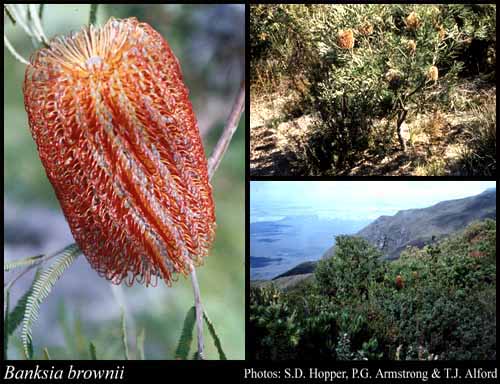- Reference
- Prodr. Suppl. 37 (1830)
- Conservation Code
-
Threatened
A taxon name retains its ‘Threatened’ status until a new name has been officially endorsed and appears in the Gazettal Notice.
- Naturalised Status
- Native to Western Australia
- Name Status
- Current
Bushy, non-lignotuberous shrub or tree (small), 1-6 m high. Fl. cream & brown/orange-red, Mar to Jul. Sand over laterite, gravel, loam over granite. In gullies.

Scientific Description
Trees or prostrate shrubs, 2.5-5 m high; branchlets glabrous or hairy. Leaves petiolate, whorled, 60-110 mm long, 7-12 mm wide, hairy; petiole 4-5 mm long; lamina flat, once divided, pinnately divided, divided to the midrib, with 45-75 lobes on each side, the margins recurved. Inflorescences pubescent (with soft, straight, erect hairs), cream, orange, red or brown; innermost bracts 6-7 mm long, hairy. Perianth 29-35 mm long, hairy, all over, limb apex hirsute (with long, rough and coarse hairs), without awns; pistil 35-48 mm long, hooked, style glabrous. Follicles hairy, pubescent (with soft, straight, erect hairs), elliptic, 17-25 mm long. Flowers in March, April, May, June or July. Occurs in the South-west (SW) Botanical Province(s), in the Jarrah Forest (JF) or Esperance Plains (ESP) IBRA subregion(s). : Conservation code Threatened (T).
Distribution
- IBRA Regions
- Esperance Plains, Jarrah Forest, Warren.
- IBRA Subregions
- Fitzgerald, Southern Jarrah Forest, Warren.
- IMCRA Regions
- WA South Coast.
- Local Government Areas (LGAs)
- Albany, Cranbrook, Gnowangerup, Plantagenet.